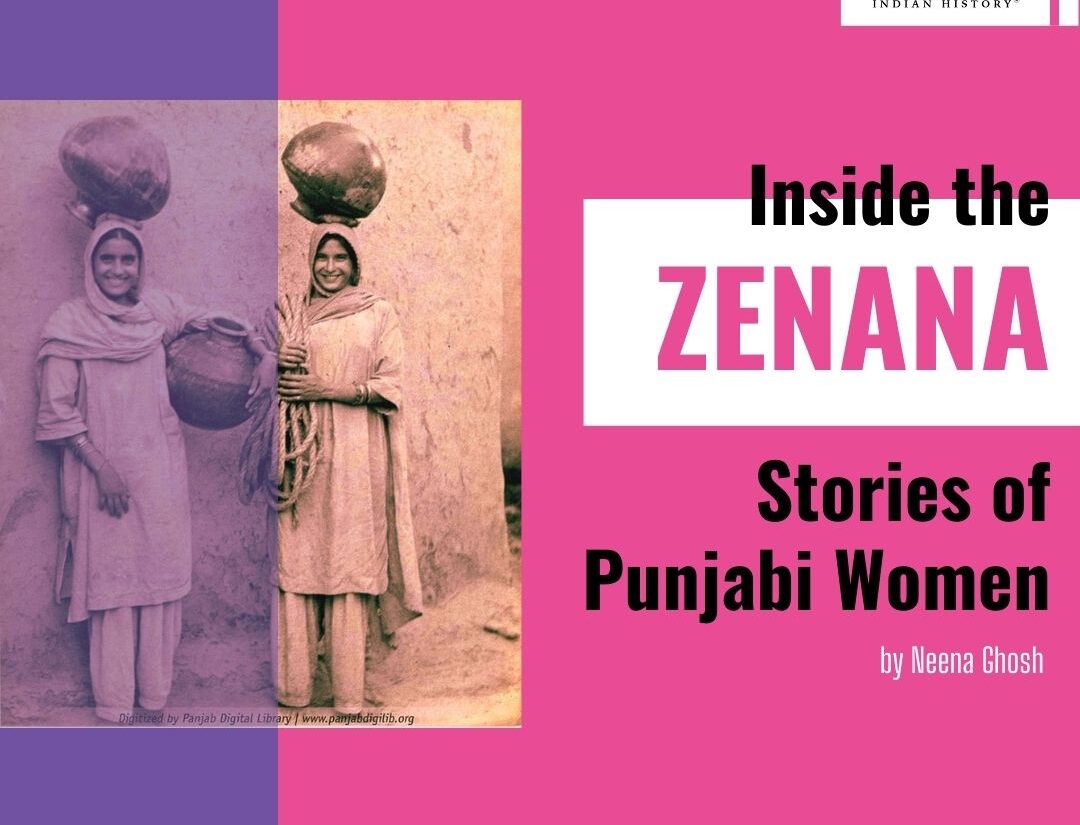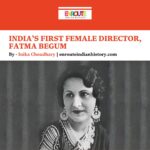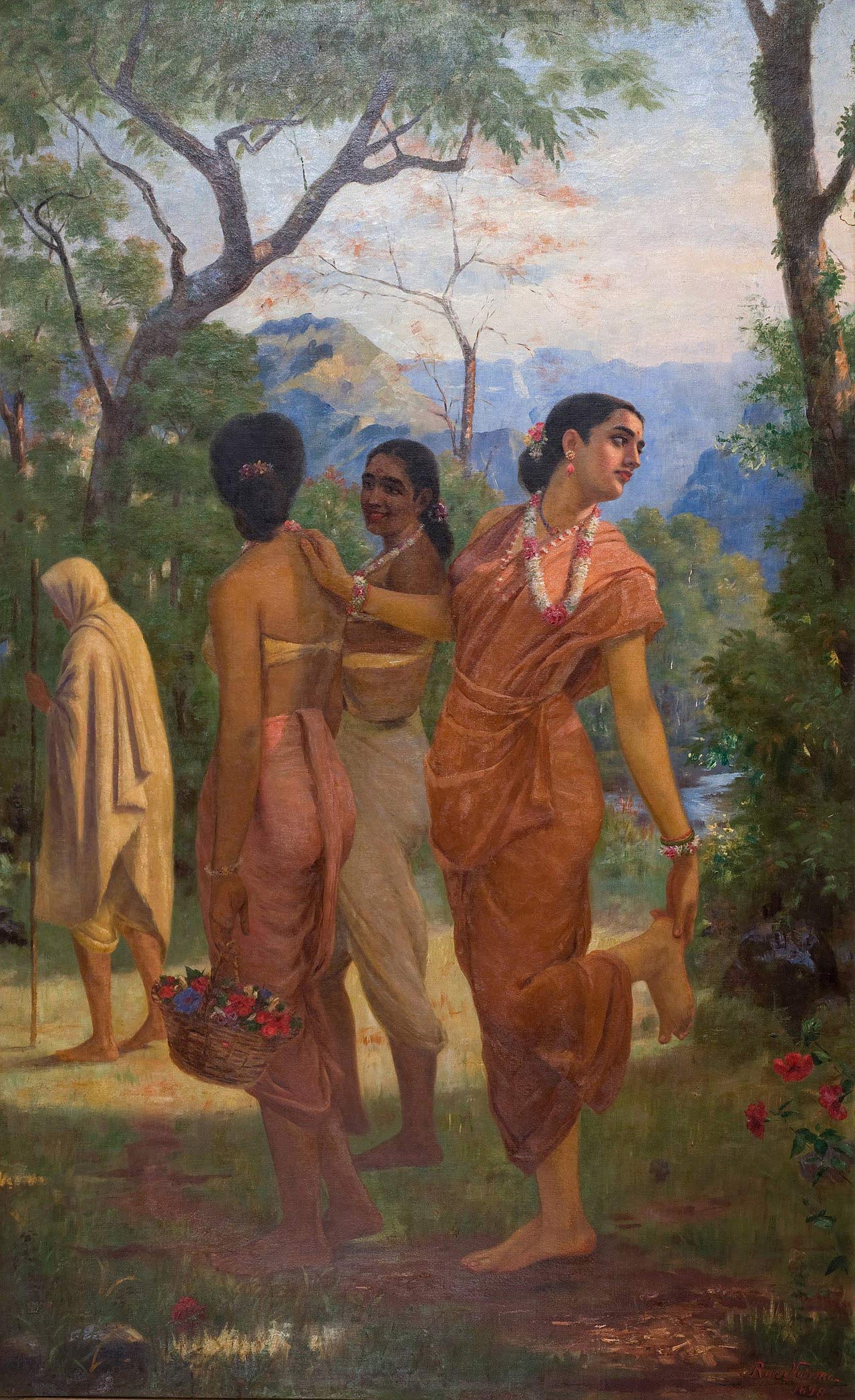
Article Written By EIH Researcher And Writer
Neena Ghosh
“For most of history anonymous was a woman” -, Virginia Woolf, Orlando
These famous words from Virginia Woolf’s novel Orlando, capture how partisan and discriminating History has been to a woman and her position through the aeons. The nomenclature of the subject in itself signifies that it is a man’s story and not that of a woman. It is a man’s world and not that of a woman. However, is that true? Certainly it is not. Feminist historian Gerda Lerner once offered an excellent statement regarding the disparate roles men and women played in the hunting and gathering society. While men went out to hunt, women stayed back. For Lerner, this was not the moment when women succumbed to domesticity; rather this was the moment when the worlds of the two sexes, despite being different, came to denote the ideal of ‘separate but equal’
However these egalitarian principles have long since waned away. For women living within the four walls of their household and performing all the domestic chores is a sign of their weakness and inferiority. It is a personification of their docile and coy attitude. And yet there have been many moments when several women and some men have challenged these blasphemous beliefs and questioned their validity. This phenomenon of protest has taken place across the world at varied points of time and they have been extremely significant. The ethos of this fight for liberation, equality and equity, began from the time of the First World War and has continued to gather momentum since then. However it must also not be forgotten that long before the First World War began there were spurts of movements across the world, echoing for equality of the two sexes. The waves of feminism have changed their shape and character but its pertinence still stays.
Thus it would not be incorrect to say that the epoch of feminist movements across the world started from the Twentieth century. It received widespread proliferation across the world and its seismic waves were felt in India as well. The waves broke out at different points of time and had in its agenda various motives and ideas. At this juncture therefore, it is noteworthy to discuss the Second wave of feminism in India. It echoed the principle of “Private is political”. There was an attempt to look at the inner world of women and identify the areas where they were ill-treated and seek for their ultimate rectification. Brave women and men were now looking within the domestic walls of their lives to see how deeply patriarchy and misogyny had coloured them. Although the Second Wave of the movement have long since been replaced by the Third and Fourth phases of the movement, the process of writing one’s memoir to recognise the points of inequity did not become redundant.
It is in this context that we place eminent Punjabi author Dalip Kaur Tiwana’s autobiography, A Journey on Bare Feet. Tiwana subscribes to the efficacy of a memoir and writes, “It is a history, history of those who have borne it (on their bodies) long before, it is written on the pages of history. This autobiography is dedicated in remembrance to those who have endured history on themselves”. It is the story of her mother and her grandmother, the quintessential point that Virginia Woolf makes in A Room of One’s Own. Women need to talk about the tales that their mothers, grandmothers, aunts, sisters and friends discuss in the four walls of their kitchens or their courtyards or aangan. Stories of the Zenana not only make for a fascinating read but subtly disclose the intricate lines that weave the story of so many women. Gerda Lerner had once said, “Women’s history is women’s right…an essential, indispensable heritage from which we can draw pride, comfort, courage, and long-range vision.”
What makes A Journey on Barefoot a riveting read is how it defines the idea of womanhood in a deeply feudalistic, casteist and orthodox Punjabi society. Tiwana has no qualms about the demarcation between sex and gender. She writes how the women were simply traded off in Punjab and that it was normal. They were simply sexual objects to be used to carry on one’s bloodline. Simone de Beauvoir in The Second Sex rightfully observed, “Woman is womb…We are exhorted to be women, remain women, become women…she is called ‘the sex’, by which is meant that she appears essentially to the male as a sexual being. For him she is sex – absolute sex, no less. She is defined and differentiated with reference to man and not he with reference to her; she is the incidental, the inessential as opposed to the essential. He is the Subject, he is the Absolute – she is the Other.”
Tiwana while describing the several women in her life does not forget to ascertain how they too became patriarchal at several points of time. Patriarchy was simply an implement of convenience. Thus Tiwana notes that although her paternal grandfather was dismayed at the birth of three consecutive daughters, he wanted to educate Tiwana. Here the education of a granddaughter was linked to the idea of prestige and yet again the point of bloodline makes its appearance. At another instance, Tiwana recounts how her mother Chand Kaur was ill-treated for several reasons (being dark-skinned, hailing from a poor family and also being the mother of three daughters), she earned an iota of respect after the birth of Tiwana’s brother. These conflicting incidents are a witness to not Tiwana’s writing prowess but also to the inherent complexities of society.
At a point Tiwana herself is driven to an existential crisis; after her marriage, Tiwana is asked whether she would be interested in continuing with her studies. Here she was addressed as Ms.Tiwana and to her utter dismay Tiwana realised how she was living a false life all her life and that she is a nobody with no name of her own. At another juncture Tiwana questions her own vanity, deeming herself to be extremely unattractive.
The book is a collection of twenty-seven chapters. While penning it, Tiwana may have had a form of catharsis. There might have been an ultimate resolution. However these are mere points of speculation that can be made while appreciating or criticising the text from the point of literature. To a History enthusiast however, the text holds a different meaning. When one reads Tiwana’s autobiography in conjunction with her other stories, then one can identify the similar themes and ideas. For instance, the point of selling women off or polygamy, themes present in her autobiography find a place within her novel And Such Is Her Fate (Eho Hamara Jiwana, 1968). Agin the issue of existential crisis finds a place in another novel of hers, Who am I?, where her protagonist transcends the lives of a mother and wife and moves on somewhere else. Her novels often are an answer to the prejudices and stereotypes of society. Her protagonists and other characters are strong women, who speak for themselves. While there are some like Bhano who reconcile to their fates, there are others like Kiranjeet who voice their protests. Thus in her nuanced sense, Tiwana is writing herstory.
Writers from Punjab like writers from other regions have written on a diverse set of topics. Some have written about the eternal love story of Heer and Ranjha, often connecting to the world of the Spiritual and Temporal, others like Amrita Pritam have written about female emancipation through renowned books such as Pinjar. In this illustrious mosaic of books, the work of Dalip Kaur Tiwana, recognised as the Jane Austen of Punjab takes a somewhat backseat. This is really an unfortunate situation. Thus we need to go back to the writings of Dalip Kaur Tiwana and not let it get forgotten. Her autobiography, in this case our point of discussion is particularly important for it studies not only the lives of women but also their psyche, To quote Gerda Lerner again, “Women have always made history as much as men have, not ‘contributed’ to it, only they did not know what they had made and had no tools to interpret their own experience…..”
Bibliography
Tiwana, Dalip Kaur, A Journey on Bare Feet, Sangam Books Ltd., 1990
Woolf, Virginia. “A Room of One’s Own:(1929).”
De Beauvoir, Simone. The second sex. Knopf, 2010.
Kumari, B. Nalini. “International Journal of Advance ISSN–2347-7075 and Applied Research (IJAAR) Impact Factor–7.065 Peer Reviewed Bi-Monthly Vol. 7 No. 5 July–Aug. 2020.”
Lerner, Gerda. The creation of patriarchy. Vol. 1. Women and History; V. 1, 1986.




















